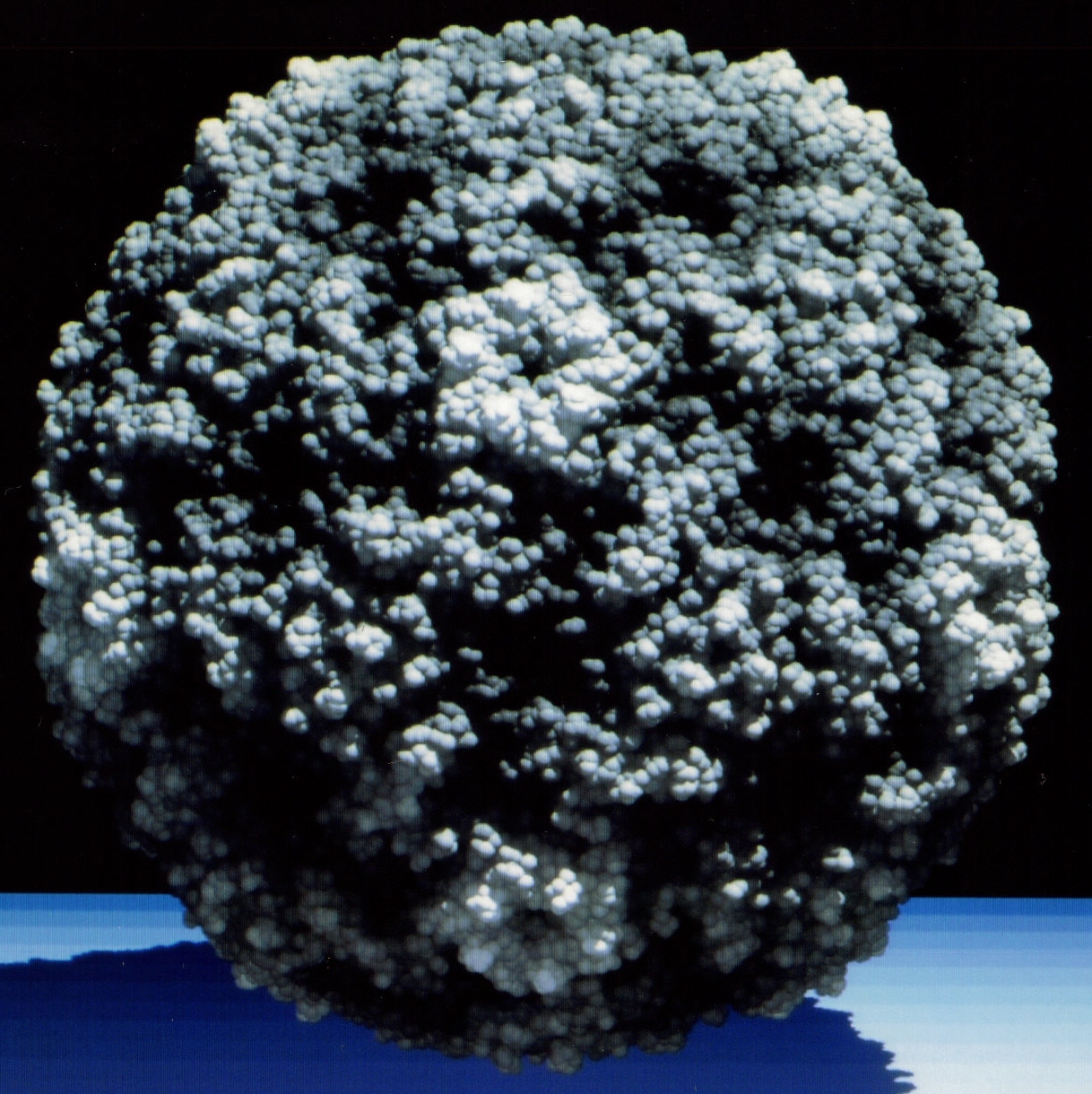- Bovine enterovirus
Taxobox | color=violet
name = "Bovine enterovirus"
image_caption =
Bovine Enterovirus.

virus_group = iv
familia = "Picornaviridae "
genus = "Enterovirus "
species = Bovine enterovirusBovine enterovirus (BEV) is a
picornavirus of the genusenterovirus . It is endemic in cattle populations but is non-pathogenic . BEV has a non-enveloped, icosahedralprotein capsid composed of four structural proteins, VP1, VP2, VP3 and VP4. The capsid has a diameter of 27nm and encloses a single stranded positive senseRNA genome of approximately 7500 bases.Occurrence
The bovine enteroviruses are endemic in cattle populations worldwide. BEVs were originally classified into seven serotypes but are now accepted as falling into two serotypes, 1 and 2, which are further classified into subtypes. BEV strain VG-5-27 of serotype 1, subtype 1 is the most extensively studied. The tissue tropism of BEV is extremely broad, including human, sheep, horse, dog, camel and other mammalian hosts. BEV-like sequences have even been reported in shellfish from water contaminated with bovine faeces.
Structure
In common with other picornaviruses, the capsid of BEV is composed of 60 copies of each of four structural proteins, VP1, VP2, VP3 and VP4, in icosahedral symmetry. The capsid is non-enveloped and roughly spherical with an outer radius of 159
Ångström and an inner radius of 107 Ångström. The outer surface of BEV is smoother than the closely relatedpoliovirus due to the truncation of surface protein loops in BEV. It is also smoother than the related humanrhinovirus due to the extension of a surface loop in BEV. The three antigenic sites of BEV all occur on a surface ridge at the junction between VP1, VP2 and VP3. BEV has a crater-like depression at the icosahedral 5-fold axis which descends into a cylindrical hole of 10 Ångström in diameter which runs almost to the inner suface of the capsid. A hydrophobic pocket contained within VP1 contains a myristic acid molecule, the removal of which appears to be a pre-requisite for virus uncoating.Replication
Cloning
References
Smyth M, Pettitt T, Symonds A and Martin J (2003) Identification of the Pocket Factors in a Picornavirus.Archives Virol 148: 1225-33.
Smyth MS, Symonds A, Brazinova S and Martin JHJ (2002) Bovine Enterovirus as an Oncolytic Virus: Foetal Calf Serum Facilitates its infection of Human Cells. Int. J. Mol. Med. 10, 49-53
Smyth, M.S. and Martin, JHJ (2002)Picornavirus Uncoating. J Clin Path; Mol Path 55: 214-219
Smyth, M.S. & Martin, J.H.J. (2001)Structural, biochemical and electrostatic basis of serotype specificity in bovine enteroviruses. Archives Virol. 146, 347-355
Smyth, M., Trudgett, A., Martin, J., Hoey, E. and Martin S. (2000) Conformational changes during proteolytic processing of picornavirus capsid proteins. Archives Virol. 145, 1473-1479
Smyth M, Tate J, Hoey E, Lyons C, Martin S, Stuart D. Implications for viral uncoating from the structure of bovine enterovirus. Nat Struct Biol. 1995 Mar;2(3):224-31.
Smyth M, Fry E, Stuart D, Lyons C, Hoey E, Martin SJ Preliminary crystallographic analysis of bovine enterovirus. J Mol Biol. 1993 Jun 5;231(3):930-2.
Smyth MS, Trudgett A, Hoey EM, Martin SJ, Brown F. Characterization of neutralizing antibodies to bovine enterovirus elicited by synthetic peptides. Arch Virol. 1992;126(1-4):21-33.
Smyth MS, Hoey EM, Trudgett A, Martin SJ, Brown F. Chemically synthesized peptides elicit neutralizing antibody to bovine enterovirus. J Gen Virol. 1990 Jan;71 ( Pt 1):231-4.
Wikimedia Foundation. 2010.
